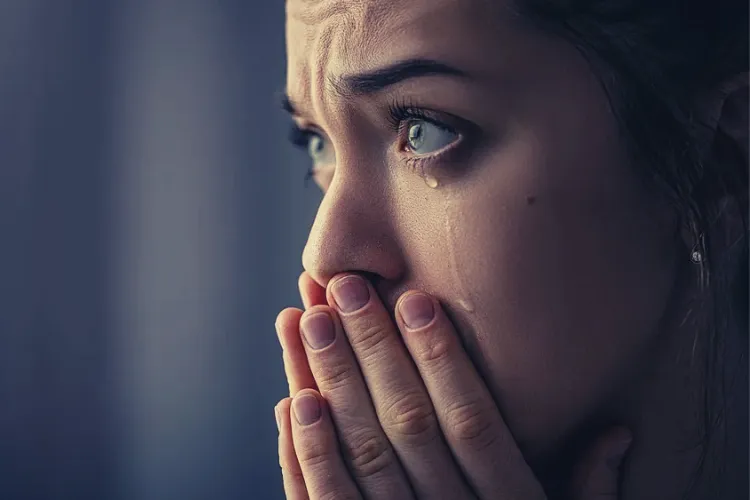“Crying doesn’t mean you’re weak. Sometimes it’s what you need to do to get strong again” – J.W. Lynne
Have you ever felt a gushing urge to cry it all out? Has your mood been so disturbed that you didn’t know what to do and ended up crying and feeling so much lighter than before? Does crying in unspoken language feel liberating from an overwhelming situation or event? If you get emotional comfort from crying, your mood may improve. However, if you try to suppress your tears or feel ashamed when you cry, it can have the opposite effect and lower your mood. The culture you live in may also influence whether or not you feel better after crying.
A basic emotion and the act of crying are controversial when it comes to gender and their association with the mockery of this act. Having said that, it is a human emotion and should be looked at that way. Every human being, irrespective of their gender identity, is allowed to cry and express their emotions and lay them out on the table. Crying is one of the most intriguing and strongest forms of emotional release, irrespective of its underlying reason. There is no appropriate time, place, or situation to cry out loud. When you listen closely to what your body needs, you will be able to strengthen the relationship that you have with yourself.
What is Crying?
Crying is the act of shedding tears (or welling up tears in the eyes) in response to an emotional or physical state.
Types of Tears
Have you ever wondered what the function or purpose of tears is in our bodies in general? Do they have any other purpose apart from being a window for expressing sadness, resentment, happiness, and related emotions?
There are in total three types of tears, they are:
- Basal Tears: These are the tears that are always present in your eye and wash away dirt and germs to keep your eyes healthy and infection-free.
- Reflex Tears: These are produced when you come in contact with an activity that triggers the tear ducts and results in the formation of tears.
- Emotional tears: Emotional tears are most commonly seen and understood as the release of all pent-up emotions on either the sad or happy side of the emotional spectrum. Tears of emotion are used to relieve stress and help your body relax. Unlike basal tears, they are not produced automatically by your body. To produce emotional tears, your limbic system—the part of your brain that regulates emotions—sends a signal to your brain’s message system, which activates your tear ducts, and as a result, a breakdown, otherwise known as a “cry session,” takes place.
Benefits of Crying
There are a plethora of reasons why crying is an act that has blessed humankind with its existence. Now, let us delve into some of the most common and powerful benefits of the same.
- Helps to self-soothe: Crying helps the body to activate the PNS (parasympathetic Nervous system) and improves the body to rest and digest better.
- Strengthens the immune system and overall health: Studies have highlighted multiple health benefits, like coping with a less resilient immune system, cardiovascular diseases, and hypertension, as well as mental health conditions, like stress, anxiety, and depression.
- Dulls pain and improves overall mood: Crying allows the body to release oxytocin and endorphins. These two are meant to be the feel-good hormones that ultimately boost our mood. While crying, we tend to breathe quickly, more often than not. While this process helps our emotions to be released, breathing in cool air also lowers our body’s temperature and puts it at ease.
Gender differences in crying
For those who do cry, know that some of us cry more than others; there is no recommended quantity of crying. According to one study, women cry 30-64 times per year, while men cry 5–17 times per year. This gender disparity, on the other hand, demonstrates how crying has been unnecessarily shamed for men. Crying is sometimes, and mistakenly, perceived as a sign of weakness in our culture. Males are not born crying less than females, but as a result of cultural pressures, boys learn to repress their emotions. The stigmatization of male tears is harmful because it promotes pain and challenges emotions to be internalized rather than dealt with and managed successfully.
When are tears a matter of concern?
Crying can be a sign of a problem at times, especially if it occurs frequently and/or for no apparent reason, or when it begins to interfere with daily activities or becomes uncontrollable. People suffering from certain types of clinical depression, on the other hand, may be unable to cry even when they want to. In any of these cases, it is best to consult with a medical professional who can help diagnose the problem and recommend the appropriate treatment.
There are numerous benefits to crying, including emotional reparative benefits, the release of cortisol, and the stimulation of endorphins. Not only that, but with each crying session, you’re being completely honest with yourself and increasing the transparency between yourself and the situation. Having said that, crying is one of the most powerful forces bestowed upon us as a means of release and stress relief. So, if you feel like crying, cry it out without feeling ashamed or judged.
If you want to vent your feelings, Ganeshaspeaks has a team of counselors and therapists in the form of listeners who can listen to you with undivided attention. Download the app now.



